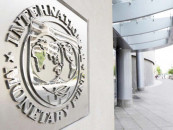Karachi’s housing problem — is there a solution?
Given the current population growth rate and migration influx, the housing demands in Karachi continue to grow

The writer holds a PhD from the University of Melbourne and is the author of Development, Poverty and Power in Pakistan, available from Routledge
Politically motivated land grabs and the ineffective governance of overlapping land management agencies are a major problem in the city. Over a dozen land management authorities seem to be operating in Karachi, often with little coordination with other authorities. Bureaucrats and ministers also have discretionary powers over land which they use for patronage purposes. Powerful groups invest their money in the lucrative formal and informal real estate business. The armed forces and other federal land-owning agencies further interfere in land-related matters within the city. Land has become a hotly contested issue, which brings enormous profits and enables Karachi’s different ethnic parties to consolidate their hold in different areas of the city.
Profit-driven financial speculation and divisive ethnic politics often fuel conflict over land, and add to the social unrest within the city. Such murky imperatives make it difficult to implement existing laws, and to introduce measures to improve the social and environmental conditions within the city. Over time, Karachi’s growing population has expanded into its hinterland, destroying the rural economy and damaging the region’s ecology. Houses built by the informal sector and efforts by the government’s Katchi Abadi Improvements and Regularisation Programme have neither proven adequate nor sufficient given the scale of the problem.
Around 70 per cent of Karachi’s current inhabitants are poor, and a majority of them have been pushed into relatively more affordable peripheral areas of the sprawling city. However, these low-income residents find living on the periphery increasingly expensive and inconvenient. Transport costs have more than doubled and the uncomfortable commutes on crowded public transport are long. A study by the Urban Resource Center in Karachi, for example, recently found that working women in the city are spending around four hours a day travelling in public transport, and much of their income is spent commuting to and from work on buses.
Given the current population growth rate and migration influx, the housing demands in Karachi continue to grow. Lack of adequate planning is leading to improvised and makeshift solutions. The informal sector, for example, is catering to this growing housing demand by either purchasing single-storey homes from owners, or by entering into partnerships with them, in order to build high-rise apartment blocks. The extra rooms or floors built onto existing structures are creating increasingly congested housing to meet with the growing demand of low-income residents. These high-rises do not follow environmental or building control regulations set by the Karachi Building Control Authority. Poor families residing here often have little light or ventilation in their homes. They also have no lifts which make life very difficult for their elderly residents. These buildings are also built on dangerously shallow foundations, which face likely collapse in the event of an earthquake. However, developers bribe the building control authorities to ignore these irregularities. The government owns considerable plots of vacant land within the city centre. Unfortunately, this available land is currently being hoarded by speculators to build real estate for commercial purposes, or to create housing for the elite or the middle classes. What the government should instead be doing is to create high density and affordable housing built on state land to provide homes for the poor. Providing planned, low-cost but high density housing could help Karachi not only cope with the growing housing needs using a limited amount of land, but also help it become a multi-class and a multi-ethic urban space, which in turn can help alleviate the existing socioeconomic and cultural divides plaguing the city.
Published in The Express Tribune, December 4th, 2015.
Like Opinion & Editorial on Facebook, follow @ETOpEd on Twitter to receive all updates on all our daily pieces.
















COMMENTS
Comments are moderated and generally will be posted if they are on-topic and not abusive.
For more information, please see our Comments FAQ